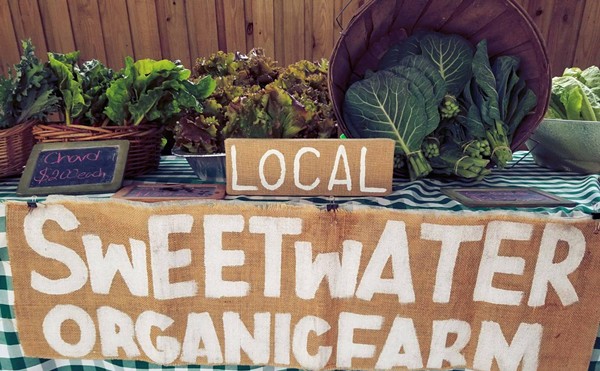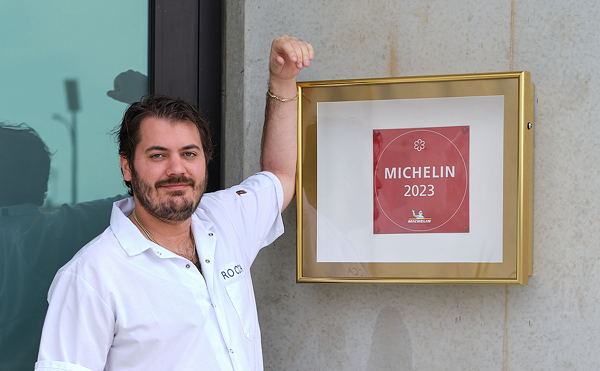A wise man once said that to understand life, you have to live it from the top down, and the bottom up. Having eaten steak everywhere from Poland to Argentina, I consider myself enough of a beef expert to guide you through making the perfect steak.
For most people, the process begins with raw meat sitting atop an absorbent diaper, nicely cradled on a foam tray at the supermarket or butcher shop. Many people brag about their specialty butcher, but honestly, I love the Kirkland-brand cuts at Costco and Fresh Market’s good-quality Hereford beef. Sure, organic meat would be better for you, because it lacks antibiotics and growth hormones (unlike regular beef, which may make you fat and send your kids into puberty at an early age), but organic may also lack taste compared to the alternatives. American corn-fed beef, for example, will taste better than organic — and it will be more fatty.
The best choice is Argentinian grass-fed beef. It’s marbled with nutritious fat, it rarely has growth hormones or antibiotics, and it will taste amazing. I get grass-fed Argentinian steaks at my local organic food store (Nature’s Food Patch), but you can also check out exoticmeatmarket.com, which offers superlative, high-class cuts, like the I don’t-care-how-much-it-costs Wagyu beef. (I’m not including Wagyu beef in this guide, because at an average price of $50 per pound, it’s not something most people would eat on a regular basis. But just so you know, Wagyu is super fatty, flavorful and melts in your mouth.)
Now that you know a little about selecting a beef, let’s move on to choosing a cut. My three favorites are tenderloin, sirloin, and rib eye. A little about each:
Rib eye The beef rib eye is the Cadillac of steaks. It’s well marbled (there’s a lot of fat spread throughout the meat), it’s very flavorful (again, because of the fat and its proximity to bone), and it’s soft. When all I care about is enjoyment, I choose a beef rib eye. The juicy inner fat melts in your mouth, while the outside fat can be cooked to crunchy, flavorful perfection. If Elvis had invented a steak, this would be it.
Tenderloin If I’m feeling health-conscious and want to keep my fat intake to a minimum, I choose a nice beef tenderloin, which is the only lean muscle on the cow that remains soft (even if you overcook it). The tenderloin is the muscle used by a bull to mount a cow. Since cows don’t mount bulls, the tenderloin is never actually used and remains soft. Tenderloin is also a good steak for beginners, as it will still be edible if you end up making it very well done.
Sirloin If you’re looking for a semi-soft steak with the option of lean or fatty, this is it. Anatomically speaking, the sirloin was raised in the same neighborhood as the rib eye, but while the rib eye was out partying with hot girls, the sirloin stayed home and studied. The rib eye grew up to be a marbled fat guy, while the sirloin is more fit and has options. The meat is lean (for when you don’t feel like eating fat), but there is fatty cap on the side that lets the diner choose whether to keep the fat on or take it off. The sirloin is my go-to steak when I want to enjoy my meal but save some money at the same time. It’s not as fun as the rib eye, but it’s still tasty.
When seasoning your meat, keep in mind that all a good steak needs is some salt and pepper. Before my steak is cooked, I like to rub it with Goya-brand Adobo seasoning (which has powdered salt). If I don’t have any of that on hand, I like to use just regular powdered salt (or popcorn salt) because it melts and permeates through the meat much better than coarse salt does. Coarse ground pepper is also rubbed in.
I sometimes enjoy a good side condiment like chimichurri, garlic butter or spicy guacamole to augment my steak, but if you’re adding steak sauce, you may need to buy better beef. And if you put ketchup on your steak, you need to stop reading this and really think about your life. You hear me, ketchup guy? Seriously, stop putting ketchup on your steak. You’re ruining it!
Now that you’ve chosen a type of beef, selected a cut and appropriately seasoned it, all that’s left is the cooking. Although I only know of one way to skin a cat, there are several ways to cook a good steak, each largely dependent on how much time you have.
No time If I have very little time to cook a steak, I will heat a cast iron skillet on the stove on high heat until it smokes. I will then sear the steak about 2-3 minutes per side — I like it rare. If I want it more cooked than that, I sear the steak once on each side and finish it in the oven at 450 degrees until desired doneness is reached. Or just keep it on the skillet longer, but be careful not to burn the meat.
30 minutes A half hour usually gives me enough time to light the propane and cook my steak on the grill. I don’t cook the steak directly on the flames, instead turning two heating elements to high and putting the steak over the third, unlit burner. Then I close the lid and cook it like an oven at 500 degrees. If you have a simple grill that doesn’t allow for this, you can cook the steak directly over the flames, making sure to flip it often so it doesn’t burn.
All the time in the world If I have a lot of time, I like to cook my steak properly in a charcoal grill. I start by making an oakwood fire; then I add charcoal and wet applewood chips (to create smoke). I cook the steaks with the lid closed so as to smoke them at the same time. This is the best method for a perfect steak.
















